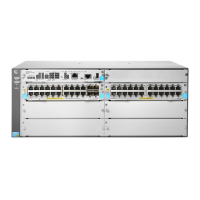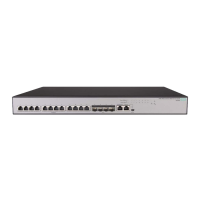257
Usage guidelines
After you execute a Syslog event monitor policy, the system saves a copy of the logs to the
EAA-monitored log buffer. When the logs in the buffer match the Syslog event, EAA executes the
monitor policy actions.
Typically, the default EAA-monitored log buffer size is sufficient. However, when a feature
malfunctions or the user enables multiple debugging functions, a large number of logs are generated.
Some logs might be discarded before the matching is performed. You can set the EAA-monitored log
buffer to a large size based on the memory usage.
Examples
# Set the size of the EAA-monitored log buffer to 1000.
<Sysname> system-view
[Sysname] rtm event syslog buffer-size 1000
Related commands
event syslog
rtm scheduler suspend
Use rtm scheduler suspend to suspend monitor policies.
Use undo rtm scheduler suspend to resume monitor policies.
Syntax
rtm scheduler suspend
undo rtm scheduler suspend
Views
System view
Predefined user roles
network-admin
Usage guidelines
You need to suspend the monitor policies under the following circumstances:
• The monitor policies are triggered frequently, affecting the system services and performance.
• The Tcl script of a policy needs to be revised.
After you execute this command, EAA will not execute the policies even if the trigger conditions are
met.
This command does not suspend a running monitor policy until all its actions are executed.
Examples
# Suspend monitor policies.
<Sysname> system-view
[Sysname] rtm scheduler suspend
rtm tcl-policy
Use rtm tcl-policy to create a Tcl-defined policy and bind it to a Tcl script file.
Use undo rtm tcl-policy to delete a Tcl policy.

